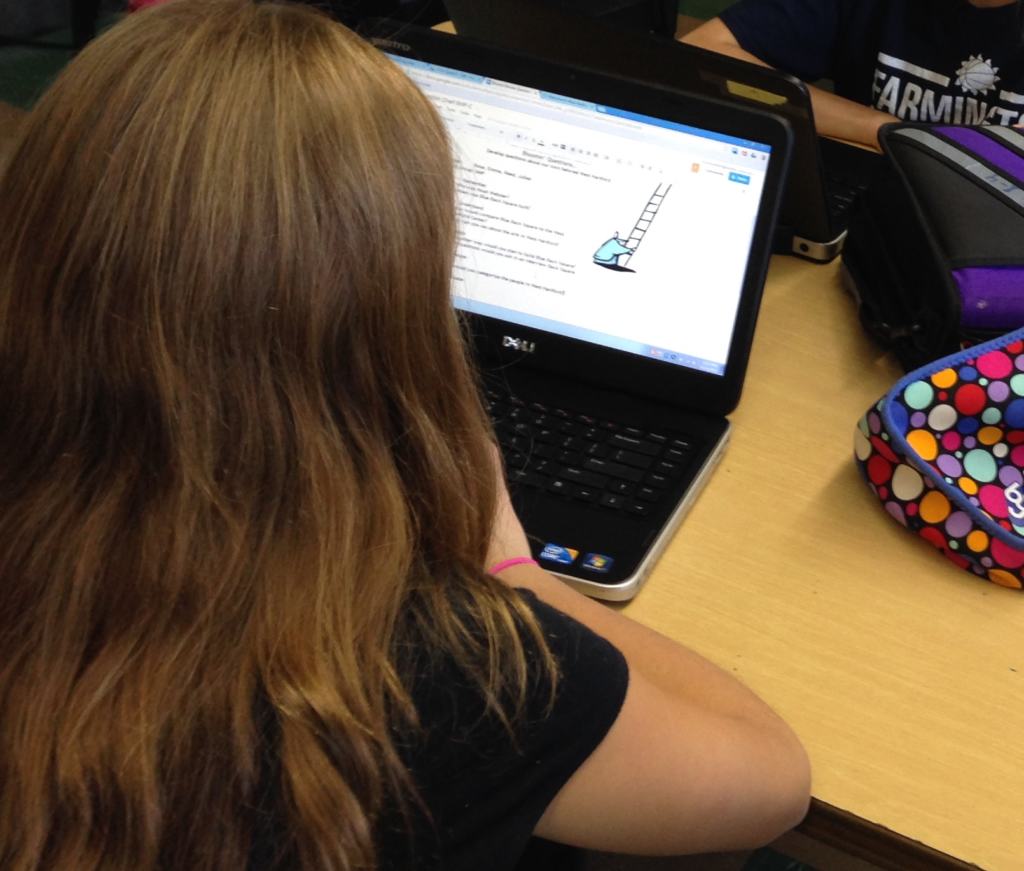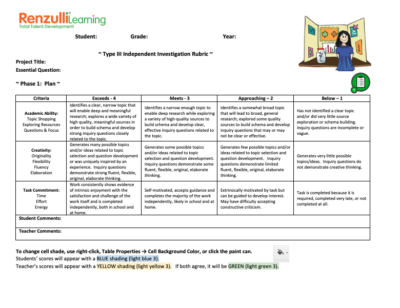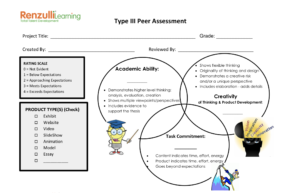As I work with teachers starting their journey with the Schoolwide Enrichment Model and Renzulli Learning, I am often asked about timelines and assessing students’ work. The timeline is completely relative to the age/ability level of the students, how often you meet with them, how long you intend to work on this project, how much time you expect them to spend outside of class working, and the depth you wish students to reach in their research and analysis. That being said, here I’ll share with you a suggested timeline based on what I used with my own students, grades 5 and up, for a project duration of approximately 18 weeks. Consider it a template that you can revise and edit as you see fit. The yellow highlights in particular are intended for you to customize as needed for your instructional environment.
I have a little secret… here at Renzulli Learning we are working on an all-new-and-soon-to-be-released Project Wizard! So as we ease into the transition, this timeline uses the new language we are working towards for the steps of the research process.

Side note: Don’t worry! It will be backwards compatible so any projects that you and your students have developed will fit into the new mold seamlessly. Students will also have the choice this school year to move to the new format or continue working in the old format, so there will be no interruption to their research and creative productivity.
Assessment is also something you should consider locally and based on the skills and standards you are conveying through the process of the Type III Investigation. Joe Renzulli and Sally Reis’s “SPAF” – Student Product Assessment Form was developed for use with the Type III Investigation process and is included in electronic form as part of the Project Wizard on the Teachers’ Site. Over my years teaching gifted students, my district sometimes used the SPAF, sometimes used our own modified version of the SPAF, and also created and utilized a 4-point rubric.
In my last year of teaching (not knowing it was my last year!) I collaborated with my eighth grade students to develop a rubric that centered on the Three Rings of Giftedness and broke the assessment down across the process of their Type III Investigations. This would enable me in future years (the ones that never happened) to score each phase as we went along in order to have that data for their Progress Reports which were also based on the Three Rings of Giftedness, so this was a natural fit for us. I am happy to share it with you now so that someone can reap the fruits of our labor! This middle-school rubric is here as a template for you to customize as needed. Notice that in the second section it expects that each student completes an Interview with an Expert and also mentions our mid-point project, The Commercial Break. I will share this project option with you in January – my students did it in March. You will also see a summary score sheet on the last page. We always emphasized not converting to a “grade” but to look at how each student was developing their Three Rings and growing over time. You can delete and revise whichever/whatever parts of it that don’t work for you!
You could use this as a hard-copy and have students and teachers circle the scores in different colors. I created it to use electronically with students “in the cloud” and the score-cells were shaded according to the instructions on page 1. You could pass the Word document back and forth through the students “Documents” in Renzulli Learning, or use whichever cloud-based platform your school has access to. The instructions will need to be adjusted based on your chosen platform.
I hope that you find the Type III Investigation Timeline and Type III Investigation Rubric helpful as you get started on the Type III process with your students – whether you are giving them full-open-ended choice or pulling Project Based Learning into your curriculum umbrella. It’s all about facilitating the process, whatever the content!
=) Jeannie



